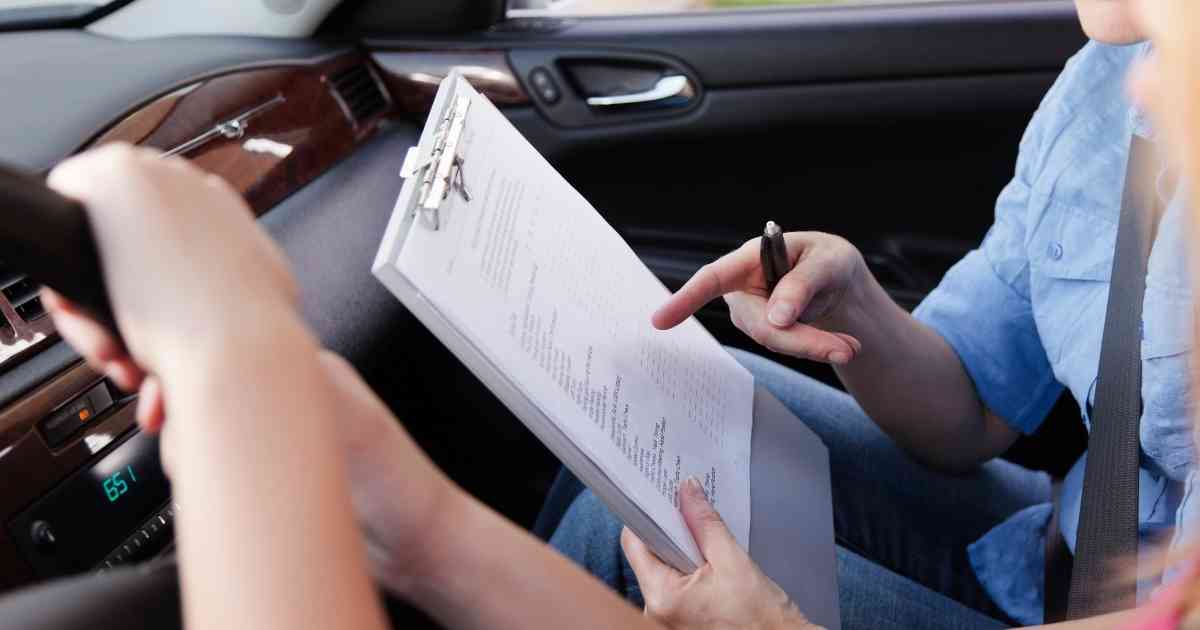Many of us can remember the sleepless nights leading up to our driving exam. Getting your license is exciting and being able to get on the road yourself is a life-changing event, but it also comes with its own worries.
Breaking the test down, the DMV is just testing one thing – your display of safe driving. Thinking about it this way can calm your nerves and help you understand that practicing before the exam will show the driving examiner that you can confidently and safely operate a vehicle. To remove the pressure, it’s best to be prepared.
So, how can you go from an anxious student driver to a self-assured motorist?
Here are 10 simple driving test tips that can get you ready to smash the exam and greatly improve your chance of success the first time.
Driving Test Tips: Top 10
1. Ask People For Advice

It may not feel like it right now, but people do understand how you feel! Plenty of people in your life have been through a driving test and can give you tips on how to pass. Talking to friends or family about how they prepared and kept calm will give you insight into it all. Even talking to people who didn’t pass the first time can be helpful since they can give you tips on driving errors to avoid.
Reddit or Quora are great sites to learn common mistakes and pick up good driving habits. There’s a forum full of responses from people who successfully received their driver’s license, and even driving examiners, to help you out.
2. Go Over a Knowledge Test

Road signs, traffic signals, and understanding all right-aways at junctions are important things to review before your driving test. To prove you are comfortable driving to the examiner, you must show them that you know the basic driving rules.
If you prepare yourself beforehand with knowledge on how to safely and legally navigate roadways – such as understanding emergency lights and the different kinds of traffic signs – you will be more confident when taking the test. It will also improve your chances of looking like someone with driving skills, rather than a learner driver.
An extra tip that is relevant here: be sure to be aware of posted speed limits and always maintain a safe speed.
3. Take A Practice Test With an Instructor
A practice road exam with a driving instructor can be a simple but effective way to reduce the pressure when your driving partner becomes a driving examiner. New drivers respond well when they have practice runs before heading into an official driving test.
A driving instructor can give you plenty of feedback from practice sessions, and they can tailor tips specifically to you to help improve your practical driving. Common tips you will get from an instructor are to be more of a defensive driver, practice a specific driving maneuver, and even open your eyes to potential hazards you may not think of.
The best thing about a practice driving test is that your driving instructor is likely to have a lot of knowledge about driving test routes. This can help you familiarize yourself with the routes beforehand and drastically increase your chance of passing the real exam.
4. Remember Your Pre-Driving Checklist Procedures

A common part of life as a licensed driver is carrying out pre-drive procedures to make sure your car is safe and ready to drive. A driving examiner will look out for this before you leave the DMV parking lot. They may even ask you some questions, such as how do you check the brake lights, or demonstrate how to turn on your hazard lights.
The safety checklist is extensive but needs to be remembered. It consists of checking the equipment in the car such as the horn, the headlights, and turn signals, as well as demonstrating arm signals, checking the road conditions, and adjusting the rear view mirrors.
Make sure you are putting on your seat belt and checking your blind spots before you start your drive – you can’t imagine how many people forget these checklist items!
5. Adhere To Stop Signs
Something that is often experienced in driving tests, which may not always be said during driving lessons, is that you need to perform complete stops in plenty of time. Common driving test mistakes show that people tend to perform abrupt stops, or rolling stops when they approach a stop sign.
In reality, a safe driver approaches a road sign at a proper speed, shifts into the correct gear, and then stops completely at the road markings. Not doing this is a dangerous mistake, which could cost you your driving license. Ask your driving instructor to take you to roads with these signs, so you can practice and it doesn’t become a bad habit – you don’t want to fail your test from a single mistake.
6. Don’t Panic If You Make A Mistake
Remember what we said earlier on in the article – confidence is key. If you make a minor error, it doesn’t matter! Keeping calm and forgetting what happened can remove the mental blocks that produce common driving test mistakes, or potentially worse.
Taking the importance out of the situation can help you not overthink the little mistakes. Think of it as a normal drive. If you take a wrong turn, don’t worry, they can’t fail you for that. If you did not hear an instruction, just ask the driving examiner to repeat it.
There is no harm in any of that. Driving consists of numerous skill tests, not memory or comprehension tests.
7. Learn Proper Lane Changing
Unfortunately, you are not always in the correct lane for where you need to go, but fortunately, this is not a major problem and can be easily fixed. The driving examiner may ask you to do this during your driving test, and incorrectly moving from one lane to another can be a potentially dangerous maneuver.
To merge to a different lane safely, you’ll want to first use your mirrors to observe the traffic conditions around you. You will want to keep a constant speed and indicate using directional signals your intention of moving to a different lane.
A common error that can cause you to fail is not checking your rearview mirror or wing mirrors for hazards. If all the traffic checks are clear, it is safe to change lanes.
Using your blinkers when turning or merging is one of the main things a driving examiner may look for. It helps to let other drivers know what you are planning to do, so make sure to give plenty of time before actually performing the maneuver.
8. Exaggerate Mirror Checks

You have probably heard this a thousand times, but not checking your mirrors and blind spots is a common mistake for students. Mirrors are crucial when driving, as you can observe what other vehicles or potential hazards are located around you, helping you to avoid collisions.
Worse than that, though, is you are checking them, but the driving examiner is not picking up on it and gives you a fault. We recommend that you make it obvious every time you check the mirrors. Now we don’t mean swivel your head every time – just move it slightly in the direction so the examiner notices it.
9. Adhere To Speed Limits
Driving within 5 mph of the speed limit is incredibly important on your test. Not only does it show you are a safe driver, but also that you take notice of road signs, such as the speed limit signs, and change how you are driving accordingly.
Driving at a safe speed is important in the real world, and not just during a driving test. It can help you approach a traffic signal more carefully, foresee hazards earlier and, in the event of a collision, make it a lot less dangerous.
10. Prepare The Night Before
A little bonus tip from us to relieve the pressure before the exam – get some sleep! You have a lot to remember, and you have put the effort into practicing already.
The best thing you can do now is sleep, stay hydrated, and meditate to relieve some pressure. Thinking of the positives will keep you in the right frame of mind on the road, and before the big day.
Conclusion
Now you have read our 10 driving test tips on how to pass your for the first time, you can rest easy knowing that your chances of passing have increased massively! It isn’t easy, but you have got this!
Keep your eyes on the prize (and the road!) and you will have your driver’s license soon enough.

